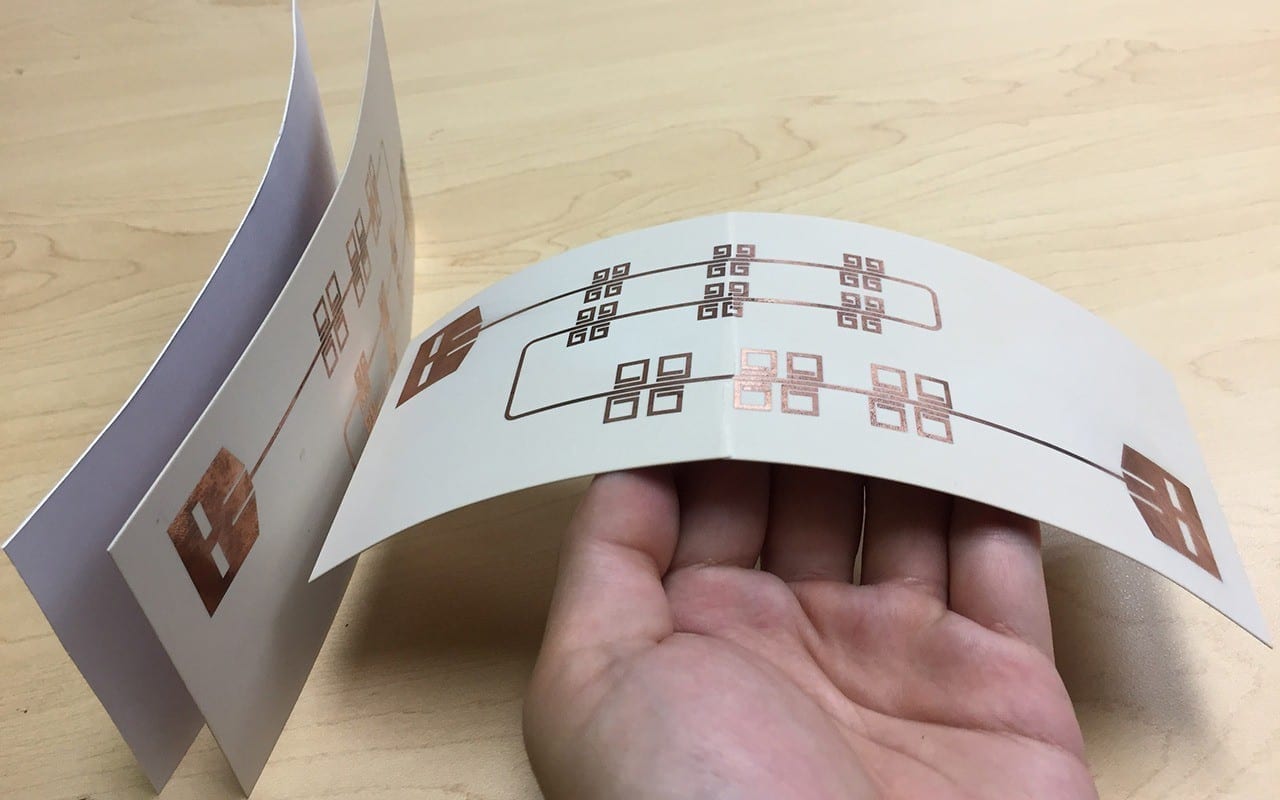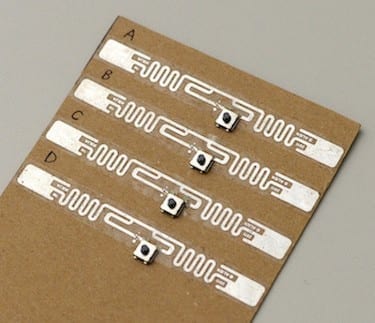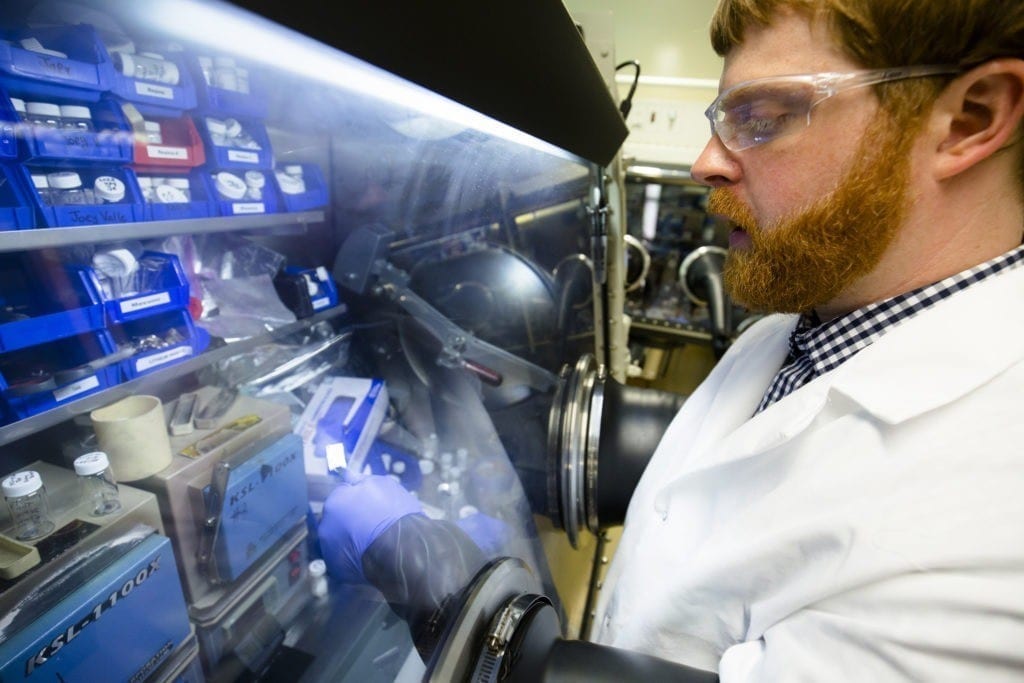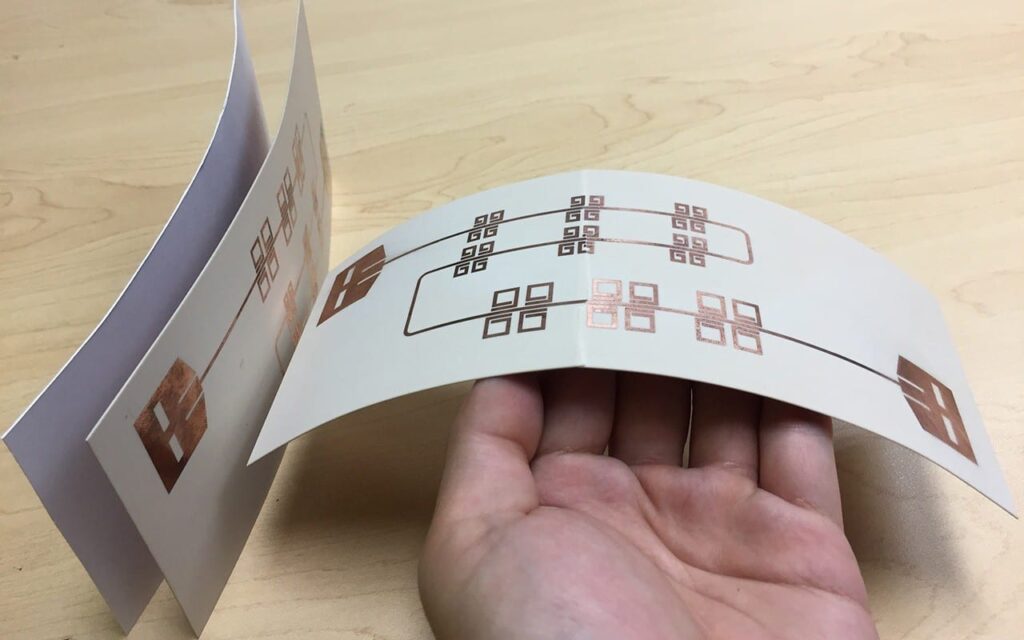
Engineers have developed printable metal tags that could be attached to everyday objects and turn them into “smart” Internet of Things devices.
The metal tags are made from patterns of copper foil printed onto thin, flexible, paper-like substrates and are made to reflect WiFi signals. The tags work essentially like “mirrors” that reflect radio signals from a WiFi router. When a user’s finger touches these mirrors, it disturbs the reflected WiFi signals in such a way that can be remotely sensed by a WiFi receiver, like a smartphone.
The tags can be tacked onto plain objects that people touch and interact with every day, like water bottles, walls or doors. These plain objects then essentially become smart, connected devices that can signal a WiFi device whenever a user interacts with them. The tags can also be fashioned into thin keypads or smart home control panels that can be used to remotely operate WiFi-connected speakers, smart lights and other Internet of Things appliances.
“Our vision is to expand the Internet of Things to go beyond just connecting smartphones, smartwatches and other high-end devices,” said senior author Xinyu Zhang, a professor of electrical and computer engineering at the UC San Diego Jacobs School of Engineering and member of the Center for Wireless Communications at UC San Diego. “We’re developing low-cost, battery-free, chipless, printable sensors that can include everyday objects as part of the Internet of Things.”
Zhang’s team named the technology “LiveTag.” These metal tags are designed to only reflect specific signals within in the WiFi frequency range. By changing the type of material they’re made of and the pattern in which they’re printed, the researchers can redesign the tags to reflect either Bluetooth, LTE or cellular signals.
The tags have no batteries, silicon chips, or any discrete electronic components, so they require hardly any maintenance—no batteries to change, no circuits to fix.
The team presented their work at the recent USENIX Symposium on Networked Systems Design and Implementation Conference.
Smart tagging
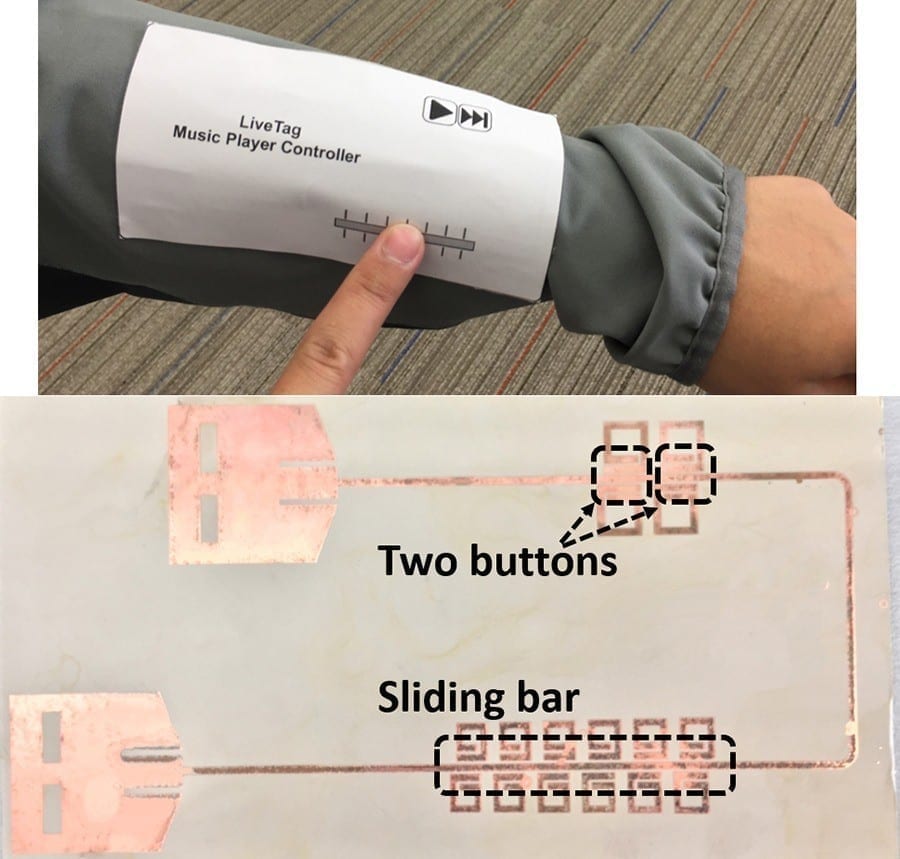
As a proof of concept, the researchers used LiveTag to create a paper-thin music player controller complete with a play/pause button, next track button and sliding bar for tuning volume. The buttons and sliding bar each consist of at least one metal tag so touching any of them sends signals to a WiFi device. The researchers have so far only tested the LiveTag music player controller to remotely trigger a WiFi receiver, but they envision that it would be able to remotely control WiFi-connected music players or speakers when attached to a wall, couch armrest, clothes, or other ordinary surface.
The researchers also adapted LiveTag as a hydration monitor. They attached it to a plastic water bottle and showed that it could be used to track a user’s water intake by monitoring the water level in the bottle. The water inside affects the tag’s response in the same way a finger touch would—as long as the bottle is not made of metal, which would block the signal. The tag has multiple resonators that each get detuned at a specific water level. The researchers imagine that the tag could be used to deliver reminders to a user’s smartphone to prevent dehydration.
Future applications
On a broader scope, Zhang envisions using LiveTag technology to track human interaction with everyday objects. For example, LiveTag could potentially be used as an inexpensive way to assess the recovery of patients who have suffered from stroke.
“When patients return home, they could use this technology to provide data on their motor activity based on how they interact with everyday objects at home—whether they are opening or closing doors in a normal way, or if they are able to pick up bottles of water, for example. The amount, intensity and frequency of their activities could be logged and sent to their doctors to evaluate their recovery,” said Zhang. “And this can all be done in the comfort of their own homes rather than having to keep going back to the clinic for frequent motor activity testing,” he added.
Another example is tagging products at retail stores and assessing customer interest based on which products they touch. Rather than use cameras, stores could use LiveTag as an alternative that offers customers more privacy, said Zhang.
Next steps
The researchers note several limitations of the technology. LiveTag currently cannot work with a WiFi receiver further than one meter (three feet) away, so researchers are working on improving the tag sensitivity and detection range. Ultimately, the team aims to develop a way to make the tags using normal paper and ink printing, which would make them cheaper to mass produce.
Learn more: These tags turn everyday objects into smart, connected devices
The Latest on: Internet of Things devices
[google_news title=”” keyword=”Internet of Things devices” num_posts=”10″ blurb_length=”0″ show_thumb=”left”]
via Google News
The Latest on: Internet of Things devices
- The Internet Of Things Market Grows Upon May 9, 2024 at 3:15 am
The Internet of Things (IoT) market has grown from a vision to a reality ... In the early 2000s, wireless connectivity, sensor downsizing and internet-enabled devices gave rise to the IoT category.
- 3 Internet of Things (IoT) Stocks with the Potential to Make You an Overnight Millionaireon May 4, 2024 at 3:18 am
InvestorPlace - Stock Market News, Stock Advice & Trading Tips By now, you’ve heard of the Internet of Things (IoT) — or the ...
- Internet of Thingson April 28, 2024 at 5:00 pm
Microchip has announced its most secure 32bit microcontrollers – a series of 120MHz Cortex-M33 MCUs for connected things. “Emerging requirements make security mandatory for the majority of IoT ...
- What You Should Know About The Internet Of Everythingon April 8, 2024 at 11:41 am
SS: The Internet of Things (IoT) has, in many ways ... and sometimes pay a premium, to find consumer devices that aren’t smart. This extends across a broad range of product classifications ...
- internet of thingson April 2, 2024 at 4:59 pm
In today’s “predictable things that happened before and definitely will happen again”, we have another company in the “smart device” business that has just shuttered their servers ...
- Internet of thingson November 22, 2023 at 3:35 am
The goal of the new US Cyber Trust Mark, coming voluntarily to Internet of Things (IoT) devices by the end of 2024, is to keep people from having to do deep research before buying a thermostat ...
- Internet of Things (IoT)on October 25, 2023 at 11:54 am
Mobile industry trade body’s latest report on satellite networks for cellular comms shows that while satellites are rapidly gaining prominence, the full extent of their potential to complement ...
- Internet Of Thingson July 16, 2023 at 10:19 pm
A study by the Hewlett-Packard security unit Fortify found 70 percent of the most commonly used "Internet of Things" devices contain vulnerabilities, including inadequate passwords or encryption ...
- Internet of Things devices start to make a differenceon June 30, 2023 at 8:11 am
A national network of vetted installers means the industry can collaborate to provide landlords with invaluable insights, says Philip Taylor of Internet of Things device provider Switchee The promise ...
via Bing News







